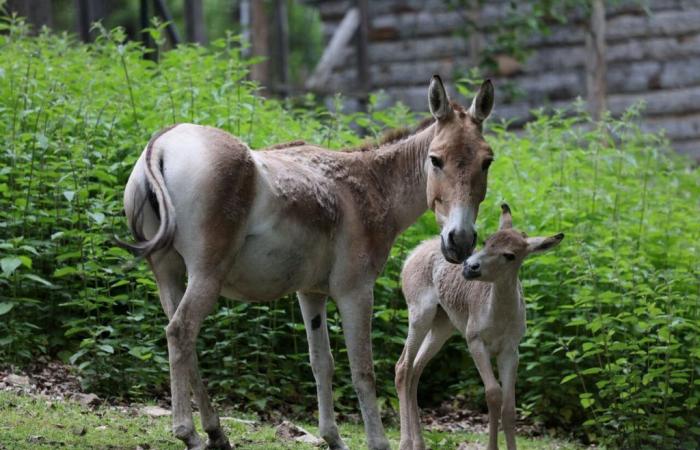By
Mathias Souteyrat
Published on
June 19, 2024 at 8:26 a.m.
See my news
Follow News Saint-Étienne
Two new births of baby kulans took place at the Auvergne Animal Park in Ardes (Puy-de-Dôme).
Tonje and Torunn, the two females housed in Auvergne, gave birth to two little females named Nikita And Kira at the end of May 2024, communicated the park on Tuesday June 18.
Asian wild donkey
Little known to the general public, the kulan, called the “Asian wild donkey”, is nevertheless a cousin of the donkey.
The species is part of a European breeding program (EEP) whose objective is to maintain genetically healthy populations in captivity, in order to one day be able to reintroduce them into the wild. These births are therefore very good news for the conservation of the species.
An endangered species
Native to Asia, the kulan is a wild donkey that lives mainly on desert or semi-desert plateaus, arid grasslands and shrubby areas of the Mongolia and the north of the China.
Why the species is threatened
According to the Red List of the International Union for Conservation of Nature, the kulan is a species classified as threatened. Abundantly hunted for its meat and in competition with livestock, the kulan came close to extinction. The animal is also threatened because of the degradation of its habitat and the scarcity of water sources. Faced with the decline of kulan populations, several reintroduction projects have been undertaken in Kazakhstan and southern Ukraine.
See everything
The heat of the desert makes this animal more active at dawn and dusk. This equine is characterized by a blond coat and a dark stripe along the spine. Females live with their young within the herd.
After a gestation period of one year, the female gives birth to a single young, which she will care for during its first two years of life.
A birth of a crowned lemur
Births are starting to take place at the Auvergne Animal Park. A crowned lemur was also born.
Follow all the news from your favorite cities and media by subscribing to Mon Actu.






